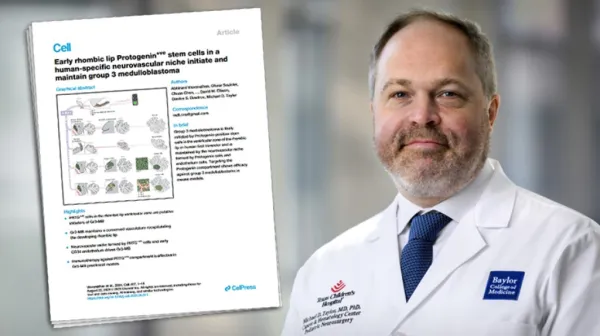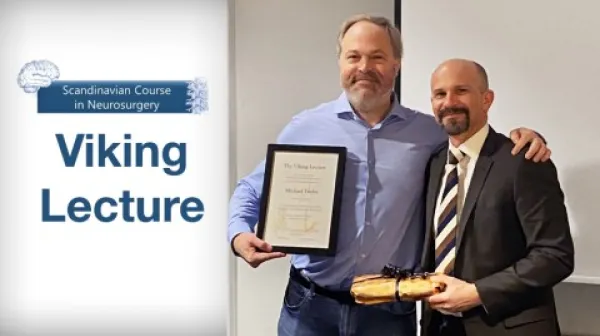Neurosurgery
Procedures We Offer
Congenital Malformations
- Chiari Malformation I & II Decompression / Laminectomy
- Encephalocele Repair
- Myelomeningocele Closure
Craniofacial / Craniosynostosis
- Craniosynostosis Repair
- Minor Scalp and Skull Lesions Resections
Epilepsy
Laser ablation surgery uses real-time MRI-guided thermal imaging and laser technology to destroy lesions in the brain that cause epilepsy and uncontrollable seizures. Texas Children's Hospital was the first hospital in the world to use this safer and less invasive surgical approach. After laser ablation surgery at our National Associations of Epilepsy Centers recognized Level 4 Epilepsy Center, 93% of patients are seizure-free one year later.
Hydrocephalus
- Endoscopic Third Venculostomy (ETV)
- Shunt Placements
Neurovascular Conditions
- Arteriovenous Malformation Resection
An arteriovenous malformation (AVM) is an abnormal connection between arteries and veins. An AVM resection is an open surgical procedure to remove a brain AVM, which can be curative in many cases. Monitoring the patient includes our use of navigation software during the operation to localize the lesion in the brain and both intra-operative and post-operative angiography to identify the AVM in surgery and confirm its removal. Additionally, intra-operative neuro-monitoring is used to monitor motor and sensory function, as well as for seizures during surgery.
We make an incision on the scalp and remove a piece of bone to access the brain. The AVM is removed by occluding first the arteries entering the AVM and then occluding the vein exiting the AVM, which allows us to safely remove the AVM in one piece. The bone is replaced after surgery with small titanium plates and screws, which are nonmagnetic, MRI safe and do not set off metal detectors.
- Cavernous Malformation Resection
Cavernous malformation resection is an open surgical procedure to remove a brain cavernous malformation by cutting it out of the brain, which can be curative in many cases. We use intra-operative navigation software to localize the lesion in the brain. Intra-operative neuro-monitoring is used to monitor motor and sensory function, as well as for seizures during surgery. An incision is made on the scalp, and a piece of bone is removed to access the brain. The cavernous malformation is removed by cutting safely around the edges, while avoiding normal brain tissue as much as possible. The hemosiderin ring (old blood products) found around the edge of the lesion is also often removed, if it can be done safely, to reduce seizure risks. The bone is replaced after surgery with small titanium plates and screws, which are nonmagnetic, MRI safe, and do not set off metal detectors. We perform an immediate post-operative MRI to confirm complete removal of the lesion.
- Cerebral Revascularization Procedures
Surgical procedures to increase blood flow to the brain are most commonly performed for patients with moyamoya disease and moyamoya syndrome. The procedure uses a blood vessel on the side of the head, which is usually unaffected by moyamoya, to resupply blood flow to the brain. We typically use an indirect bypass procedure (EDAS surgery) in which an incision on the side of the head is made, a small bone flap is removed and the lining around the brain (dura) is opened. The artery is laid directly on the brain surface, along with flaps from the dura, which over 6-12 months will grow new blood vessels into the brain, effectively improving blood flow to the brain. The bone is replaced with small titanium plates and screws (which are nonmagnetic, MRI safe and do not set off metal detectors).
- Endovascular/Catheter-Based Treatments and Embolization
Endovascular therapies are used to treat a variety of neurovascular problems, including aneurysm, AVMs and stenosis (blockages in a blood vessel). Catheters are inserted through a small needle into the artery in the leg, and using X-rays, are guided to the blood vessels in the brain needing treatment. Endovascular therapies are minimally invasive and can be used to occlude blood vessels to treat blood vessel lesions, insert coils to occlude and aneurysm, or place a stent to open a blocked blood vessel.
- Stereotactic Radiosurgery
Stereotactic radiosurgery is a radiation treatment to the brain, most commonly used for treatment of AVMs of the brain, but also cavernous malformations in rare cases. Similar to getting an MRI, the patient is treated in a machine that uses focused radiation to treat primarily the target area, which limits the radiation dose received in the rest of the brain. Patients are generally asleep for the procedure, and either a skull fixation frame or a face mask are used to help hold the head still during treatment. Treatment generally takes 30 minutes to 1 hour to complete, and patients can go home the same day.
- Vein Of Galen Embolization
Vein of Galen Malformations (VOGM) are a rare and complex arteriovenous malformation of the brain that can occur in infants and young children. Treatment is usually performed using endovascular and catheter-based techniques. Catheters are inserted through a small needle into the artery in the leg or in the umbilical artery, and using X-rays, are guided to the blood vessels in the brain needing treatment. Metal coils or embolic material are used to safely block blood vessels going to the VOGM, which can reduce the symptoms caused by these lesions. Children often need multiple treatments throughout infancy and childhood to fully treat and cure these lesions safely.
Spasticity
- Deep Brain Stimulation (DBS)
Deep Brain Stimulation (DBS) is procedure used by neurosurgeons to implant a device in the patient’s brain and a pulse generator in the chest. Electrical impulses provde stimulation to affect brain activity. It is an effective medical and surgical treatment for cerebral palsy, Parkinson’s disease, epilepsy, dystonia and Tourette syndrome.
- Intrathecal baclofen therapy
Intrathecal baclofen (ITB) therapy is an FDA-approved treatment option for severe spasticity. A surgically placed programmable pump and catheter are inserted just beneath the skin near belly button. The pump and catheter deliver Baclofen (a medication used to treat spasticity) to the fluid around the spinal cord. Because ITB therapy requires commitment from the patient and family, numerous steps are involved in being considered for an ITB pump including clinical evaluation, education, and a screening trial, among others.
- Selective Dorsal Rhizotomy
A rhizotomy is a surgery performed on nerves close to the spine. It is the most effective procedure to permanently decrease issues of spasticity in children with nerve disorders like cerebral palsy. Our team perform the selective dorsal rhizotomy (SDR) in which the neurosurgeon cuts specific nerve roots at the levels of the spine causing the spasticity, among other rhizotomy types. Selective dorsal rhizotomies including focal dorsal rhizotomy, dorsal-ventral or “palliative” rhizotomies, intrathecal baclofen pumps, deep brain stimulation, and selective peripheral neurectomy are just a few of the surgical tone management strategies utilized.
Spine Conditions
- Spine Fusions
- Spine Fixation
- Spine Laminectomy
- Tethered Cord Release
Tumors
- Brain, Spine and Skull Base Tumor Resections
Related Departments
Explore more
Texas Children’s Pediatric Neurosurgeon and Orthopedic Surgeon Collaborate to Make a Life-Chang...




Dr. James J. Riviello Awarded the 2023 Roger and Mary Brumback Lifetime Achievement Award by the ...

Texas Children’s Hospital Remains No. 1 Pediatric Hospital in the State of Texas for 15th Conse...








